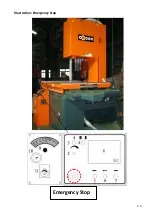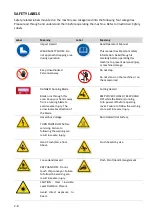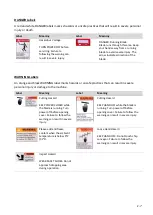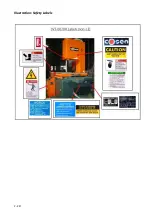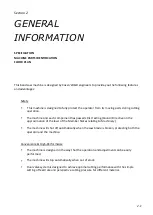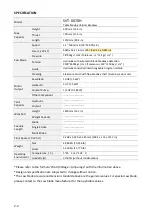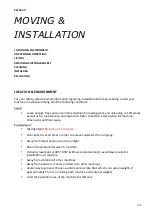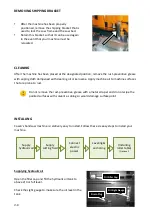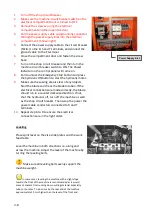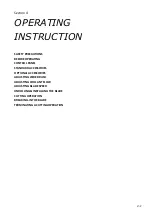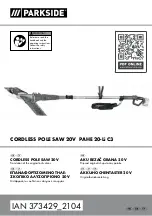
3-3
LIFTING
When moving the machine, we strongly suggest you choose any one of the methods described below
to move your machine.
1. Use a crane
Move the machine to its location by using a crane and a wire rope sling that can fully withstand the
weight of the machine (refer to machine specification under Section 1
Description
).
Machine lifting is likely to damage the machine
if not performed properly.
Warning
:
You must have a qualified crane
operator to perform the job.
You must use tools and equipment with the
proper tensile strength and use proper method
when moving your machine.
Apply the wire rope sling to the lifting hooks on
the four ends of the machine.
Refer to
Illustration: Lifiting Points
for exact locations.
Slowly lift the machine. Be sure to protect the
machine from impact or shock during this
procedure. Also watch out your own fingers
and feet to avoid injuries.
Keep the machine well balanced during lifting
process and make sure the wire rope does not
interfere with the saw frame.
When you work together with more than two
people, it is best to keep constant verbal
communication with each other.
Summary of Contents for SVT-6070H
Page 2: ... ...
Page 4: ... ...
Page 10: ... ...
Page 15: ...1 5 Illustration Emergency Stop Emergency Stop ...
Page 20: ...1 10 Illustration Safety Labels ...
Page 25: ...2 3 MACHINE PARTS IDENTIFICATION ...
Page 26: ...2 4 FLOOR PLAN Machine top view Machine side view ...
Page 36: ... ...
Page 60: ... ...
Page 62: ...5 2 Fig 5 1 Control panel layout ...
Page 63: ...5 3 Fig 5 2 Circuit board layout ...
Page 64: ...5 4 Fig 5 3 Power supply layout ...
Page 65: ...5 5 Fig 5 4 PLC I O layout ...
Page 66: ... ...
Page 67: ...6 1 Section 6 HYDRAULIC SYSTEM HYDRAULIC DIAGRAM ...
Page 68: ...6 2 Fig 6 1 Hydraulic layout ...
Page 104: ... ...
Page 105: ... ...

